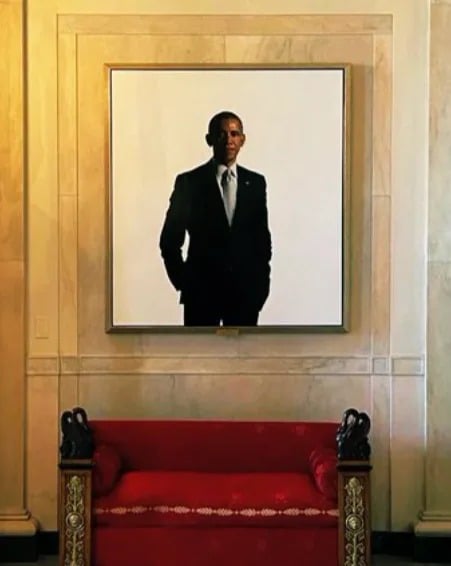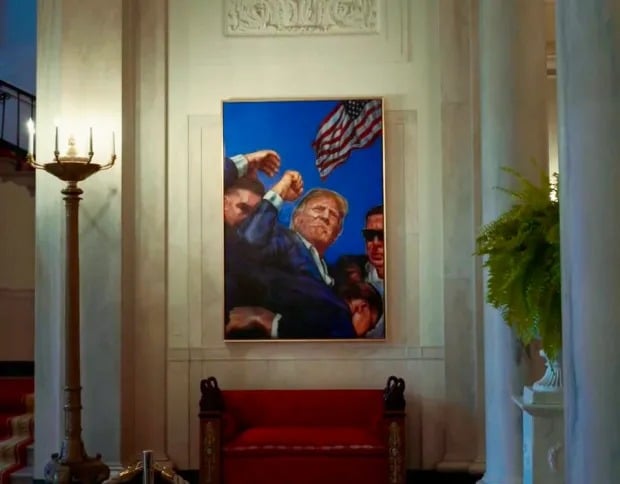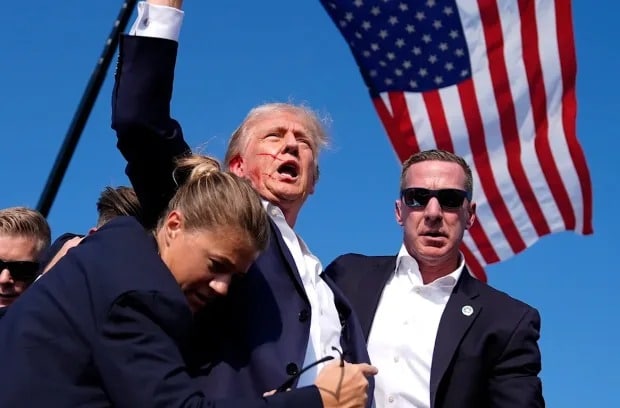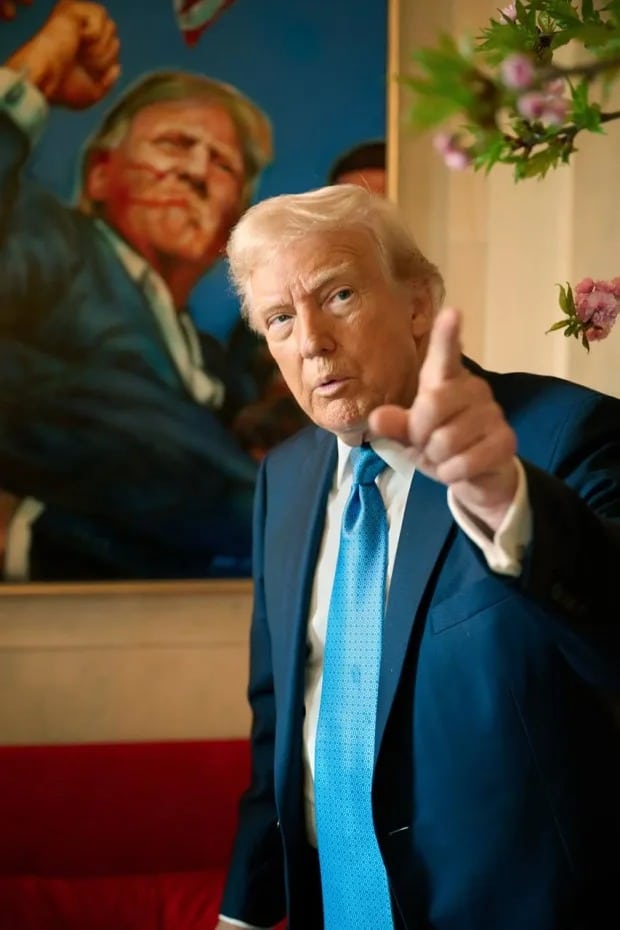Trump Replaces Obama’s Portrait with Painting of Himself After Assassination Attempt
The White House made waves this week with a dramatic update to its Grand Foyer: former President Barack Obama’s portrait has been taken down and replaced with a striking new painting of Donald Trump — bloodied, defiant, and surrounded by Secret Service agents after last year’s assassination attempt in Butler, Pennsylvania.

The bold move was unveiled in a video shared Friday on X (formerly Twitter), simply captioned: “Some new artwork at the White House.”
The painting, based on an iconic photograph taken moments after the attempted assassination, shows Trump with his fist raised high, rallying supporters with his now-famous words: “Fight, fight, fight.” The image has since become a powerful symbol of Trump’s resilience and a central theme in his campaign for a second term.

While the Grand Foyer traditionally displays portraits of recent presidents, former White House officials have explained that the layout is not permanent. Sitting presidents have discretion over what artwork is featured — and Trump has exercised that authority before.
During his first term, he had portraits of Bill Clinton and George W. Bush moved to less prominent areas of the White House. Now, he’s made another statement by shifting Obama’s portrait to a different wall, replacing it with his own defiant image. According to insiders, George W. Bush’s portrait has been moved to a staircase nearby.
Deputy Press Secretary Harrison Fields confirmed the new arrangement by sharing photos Friday afternoon.

Reactions came swiftly. Rep. Marjorie Taylor Greene posted a before-and-after comparison of the Grand Foyer, writing, “Much better.”
So far, Barack Obama’s office has not commented on the change.
Interestingly, Trump still lacks an official presidential portrait from his first term — a tradition typically fulfilled by the next administration. During President Biden’s time in office, White House officials deferred questions about Trump’s portrait to the White House Historical Association, which manages official commissions.

This latest portrait reshuffle adds to a growing list of symbolic moves by Trump. In January, a portrait of former Joint Chiefs of Staff Chairman Gen. Mark Milley was quietly removed from the Pentagon. And in April, Trump requested the removal of his own portrait from the Colorado state capitol — a request that was promptly honored.
As Trump settles into his return to the White House, it’s clear he’s making his mark — quite literally — on the building’s historic walls.